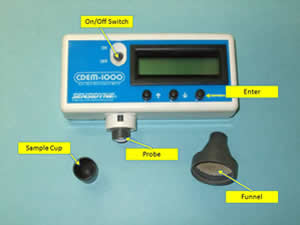Mining Feature: Coal Mine Explosion Prevention Accomplishments
Friday, September 14, 2012
Mine explosions have a harmful impact not only on the mine, its workers, and the communities where they occur but on the industry overall. Explosions do not occur often, but when they do, lives, equipment, and product can be lost.
Thanks to extensive federally funded research, a notable decline has been achieved in the frequency and severity of U.S. coal mine explosions since the early 20th century. The major safety measures responsible for this decline are rock dusting to reduce the explosion potential of coal dust generated during mining, development of permissible explosives and electrical equipment, improved ventilation and methane drainage, and improved methods for detecting hazardous conditions.
Although these advances in mine safety are noteworthy, serious mine explosions still occur. Despite a general pattern of decline in fatalities from coal mine explosions in recent decades, in the last 10 years that pattern has changed. Near-misses have occurred when mines were vacant, fortunately not resulting in any injuries. Examples of these close calls include explosions at the Pinnacle Mine in West Virginia, September through October 2003; an explosion and fire at the Buchanan Mine in Virginia, February 2005; and an explosion at the McClane Canyon Mine in Colorado, November 2005. Additionally, there have been a total of 65 fatalities and 18 injuries in U.S. underground coal mines due to explosions over the past decade. In other countries, such as China, Russia, and the Ukraine, the explosion statistics are even worse.
The importance of rock dusting and the critical role it plays in the suppression of underground coal mine dust explosions must be better understood in the mining industry. Therefore, the NIOSH Mining Program has focused its efforts as follows:
optimizing the effectiveness of rock dust as a product and rock dusting as a practice;enhancing mine dust sampling methods;providing real-time assessment of the explosibility of mine dust samples so that immediate action can be taken in areas of the mine deficient in rock dust;educating mine workers and the industry on the importance of rock dust in coal dust explosion control.
In support of these goals, NIOSH researchers have given workshops and presentations to convey the current knowledge on what can initiate an explosion, how an explosion can propagate through an entry, and how to prevent an explosion. Also, the role of rock dust and how it inerts the coal dust in a propagating explosion has been emphasized.

Coal dust explosibility meter (CDEM)
NIOSH developed a coal dust explosibility meter (CDEM) to quickly determine whether the rock dust applied in a mine entry is sufficient to prevent a coal dust explosion. Typical laboratory analysis of a dust sample taken from a mine requires days to weeks to obtain results, whereas the CDEM gives near-instant measurements. The differences between the CDEM and laboratory methods are being relayed through the peer-reviewed NIOSH publication, “Coal Dust Explosibility Meter Evaluation and Recommendations for Application.”
Current and future NIOSH research in this area focuses on how best to collect mine dust samples for explosion hazard evaluations. Factors being studied include the depth of the sample taken from the floor, the necessity of keeping samples collected from the roof and ribs separate from those collected from the floor, the size fraction of dust to be evaluated, and whether moisture should be included in the hazard evaluation.
- Coal Dust and Methane
- Coal Dust Explosibility Meter Evaluation and Recommendations for Application
- Field Evaluation of the Coal Dust Explosibility Meter
- History of the Mining Program
- How to use the Coal Dust Explosibility Meter
- Rock Dusting
- Rock Dusting Considerations in Underground Coal Mines
- Technical Development of the Coal Dust Explosibility Meter
- Technology for Real-Time Monitoring of Coal Dust Explosion Hazards
- Technology News 515 - Float Coal Dust Explosion Hazards